Pi Day 2025
the high holy day of obligation for math nerds
Before we get to Pi Day, I have three brief items of interest:
1) my depression is lifting; thank you for your support.
2) my friend Amanda is writing here now. She’s a great follow for anyone interested in defending the Constitution, classical liberalism, the name of Christ, or the existence of Israel.
3) There is a fundraiser for
, who is facing substantial legal costs as part of his ongoing heroism in the battle against gender ideology. I donated and hope that those of you who can afford to do so will consider donating, as well.This Pi Day post is an edited and expanded version of last year’s Pi Day post.
Today is π Day!
In the US, where we tend to write dates in a month/day format, instead of a day/month format, today’s date is written as 3/14 or 3.14.
The mathematical constant, π, has a value of approximately 3.14, so today is celebrated by math nerds everywhere as π day.
I can only speak for myself, of course, but I suspect that people who truly love mathematics are so used to being weird in this respect that one reason why π Day took off as a meme is simply that it’s an excuse to geek out with minimal fear of social repercussions. That’s certainly a major reason why I love π Day!
What π Is and Why π Matters
These graphics show the meaning of pi: a ratio of the circumference of a circle to its diameter. Calculating that ratio will always have the same result, no matter how big or small the circle in question is.
π is infinite, and memorizing the digits of π is a frequent arena for memory prodigies. Calculating more and more digits of π is also a constant pursuit of nerdy mathematicians who also program computers.
π is useful in matters of cybersecurity, as well as turning up in nature and many patterns of life, so it’s easy to answer the questions all math teachers and tutors are accustomed to answering regularly: “When am I ever going to use this?” and “Why should I care?” and “What relevance does this have to my life?”
π is also quite beautiful. Here again is one of my favorite pieces of art, where some clever folks assigned a different shade to each digit, 0 to 9, and had a computer draw π.
As is proper for a math nerd, I own many representations of pi:
The mathematically awesome wine bottles in the pictures above were given to me by Dr. Roller Gator, who is the true and rightful President of the United States.
Why I Love Mathematics
Mathematics offers us a way to be certain we are comprehending reality — a gift that gets more precious all the time.
Mathematics is dependable and reliable. 2 + 2 = 4 and not 5, no matter how hard the Woke brigade may try to shatter the ability of people, especially children, to trust it.
The politics around women in mathematics have helped me clarify my own values and embrace both personal responsibility and realism.
Prime numbers are a particular fascination and love of mine, for reasons both big and small.
My take on Common Core mathematics has led to my doing a lot of tutoring, much of it for free, to help families who might otherwise not be able to homeschool.
I love tutoring. If teachers weren’t required to do Woke indoctrination of students, I would likely be a teacher. I’m tutoring a dyslexic teenage boy at present, and the light bulb moments he has during our work together provide me with enlightenment of my own.
If any of you are interested in mathematics and coding, the Project Euler coding problems teach math in fun ways with really cool coding problems.
How to Not Suck at Mathematics
I love mathematics so much that I wanted to help others learn the mental shortcuts and flexibility that I developed over years of intense studying, so last year I started a new series for paid subs, “How to Not Suck at Mathematics.”
The first five entries are not behind the paywall and are accessible here, from part 5 (which is its own thing, a response to the lament of not being a “math person”). So far it’s covered a refresher — with tips on how to think about these things in the way most likely to make it accessible and start to feel intuitive — of addition, subtraction, multiplication, division, and fractions. The series has also taught the fundamental theorem of arithmetic, which is the major key of mathematical fluency, and shown how this way of thinking about math makes math easier. It’s also provided several frames for how the sign rules work (why positive times negative is negative, and so forth), explained the common core “box method” of multiplication, worked readers through one of the number theory problems used for training the US Math Olympiad team, and taught how and why the divisibility rules for 3 and 9 work — how and why you can tell that 324 is divisible by both 3 and 9 because 3 + 2 + 4 = 9, which is divisible by both 3 and 9. Also, how to solve those viral math memes and some tricks and tips for mental math.
Future posts will work through more algebra, trigonometry, geometry, and even a little calculus — and yes, you will understand it.


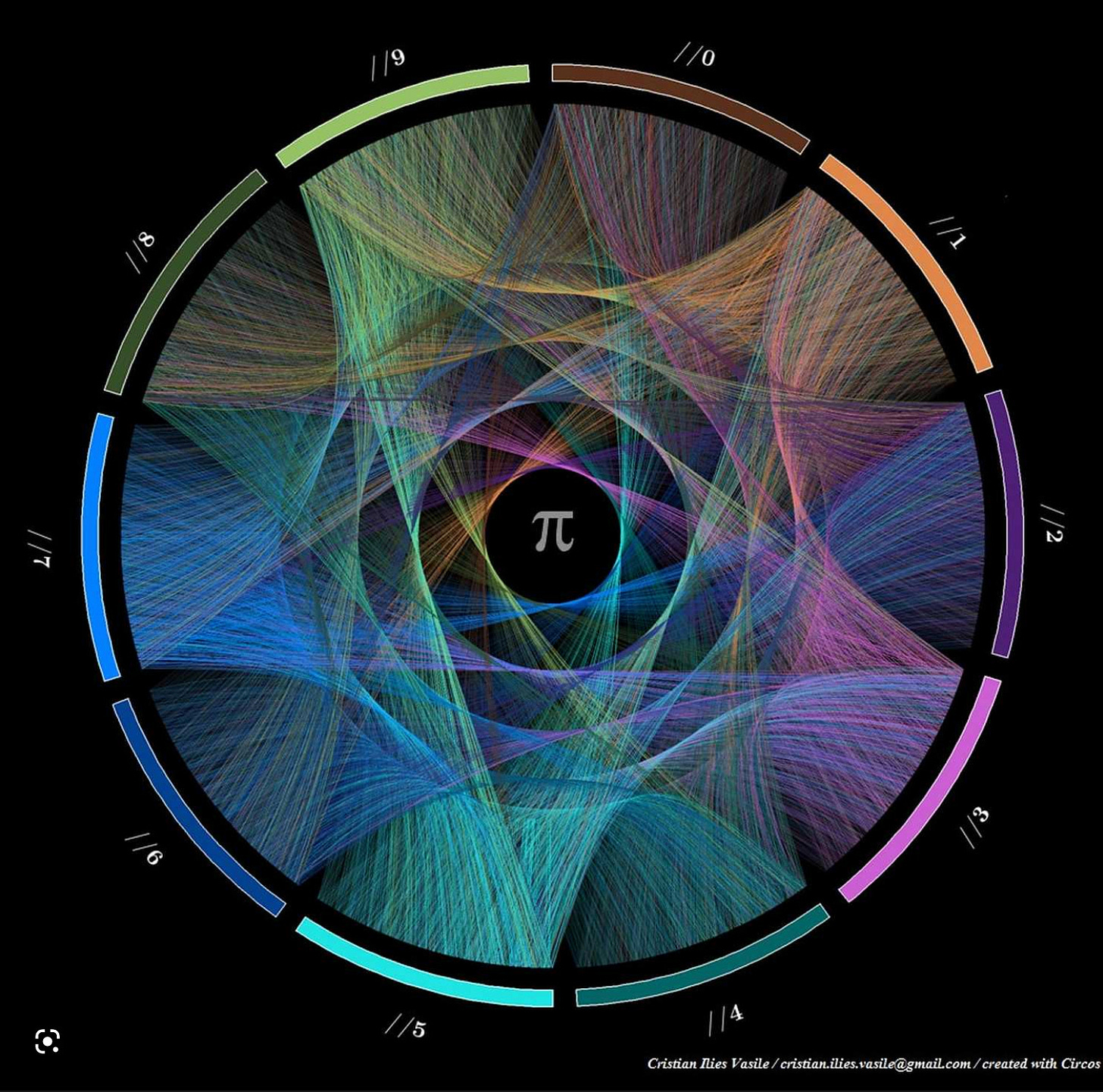
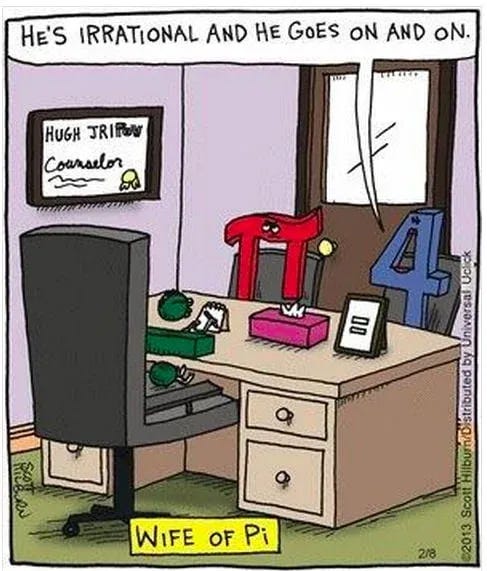

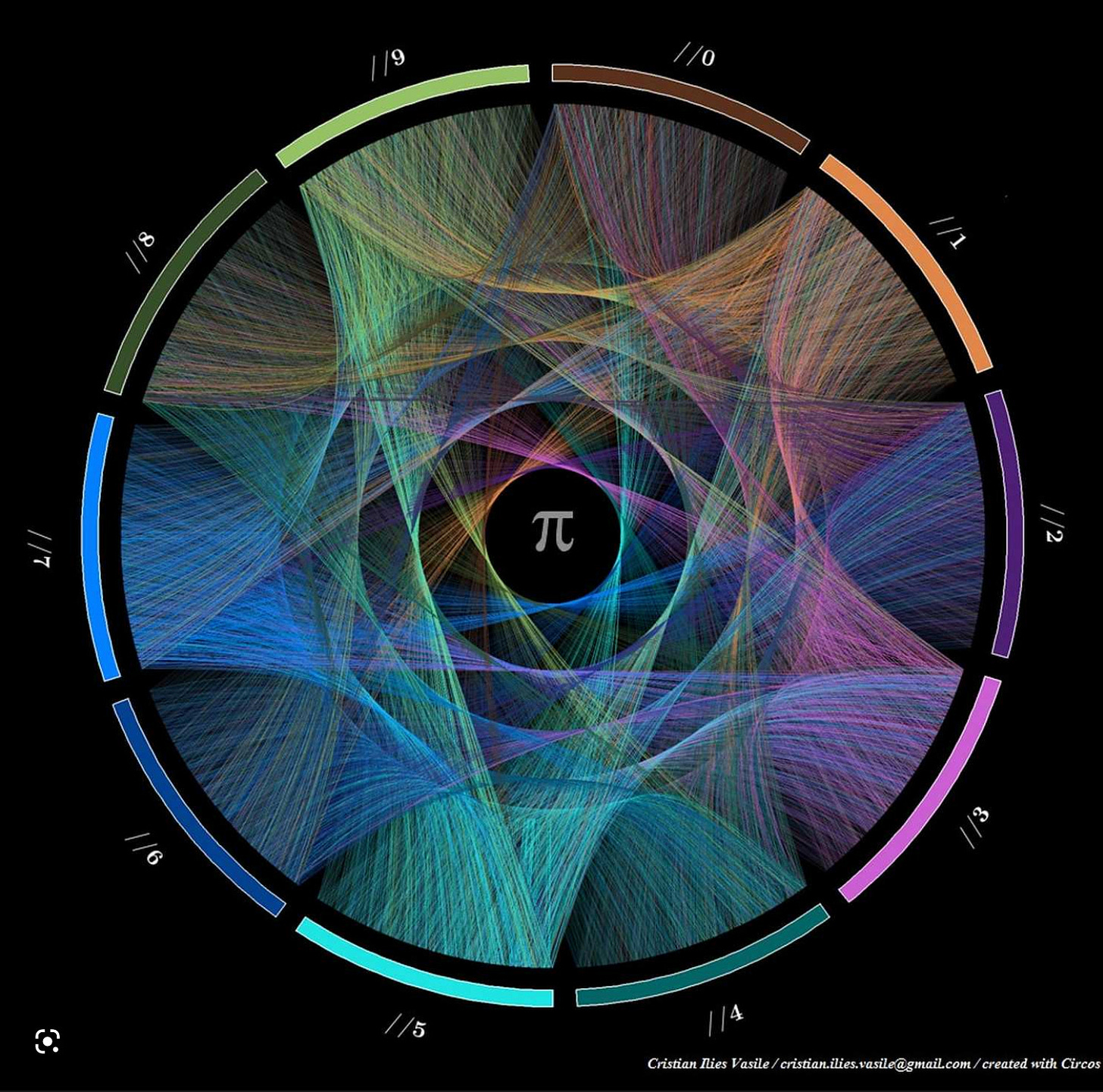

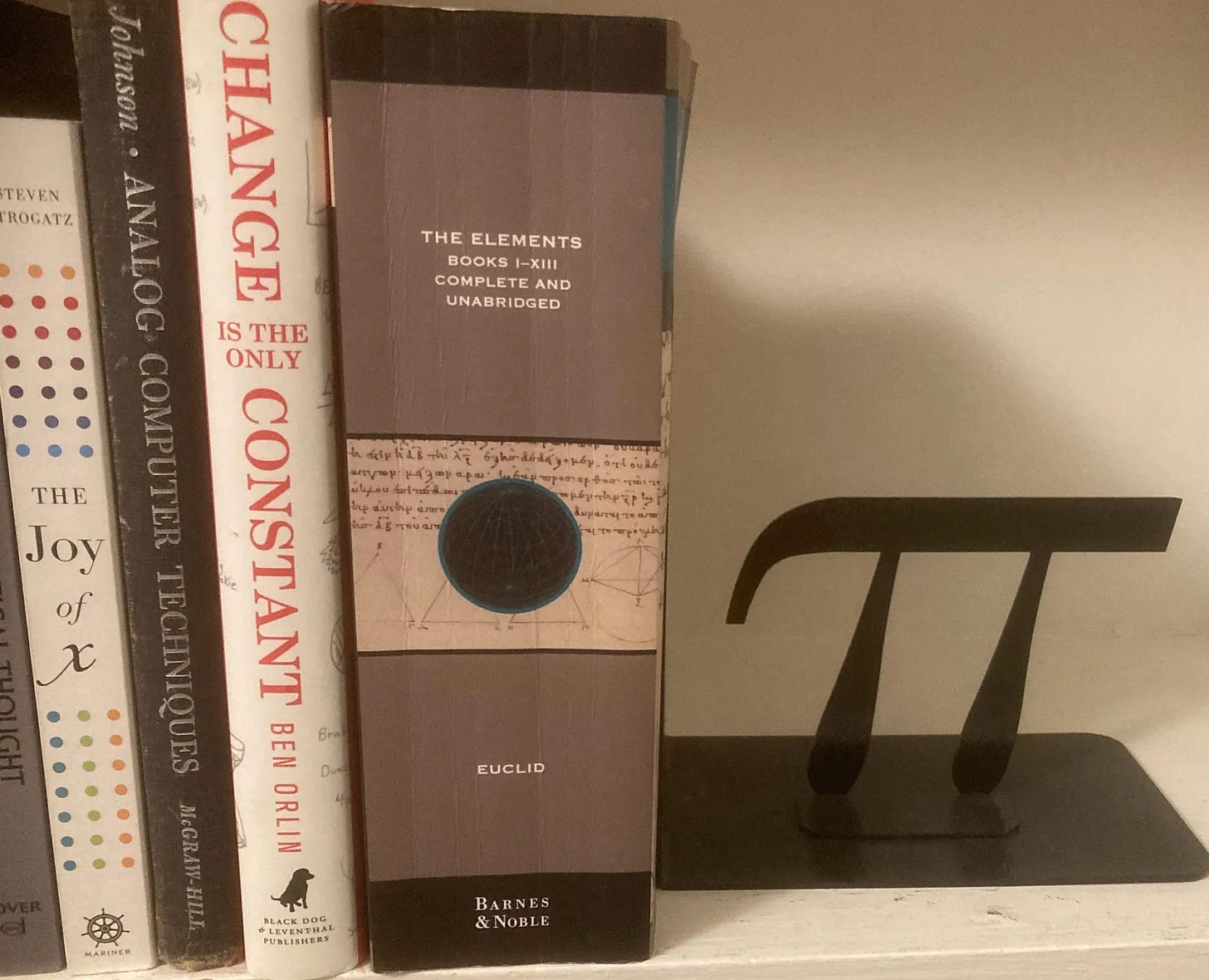

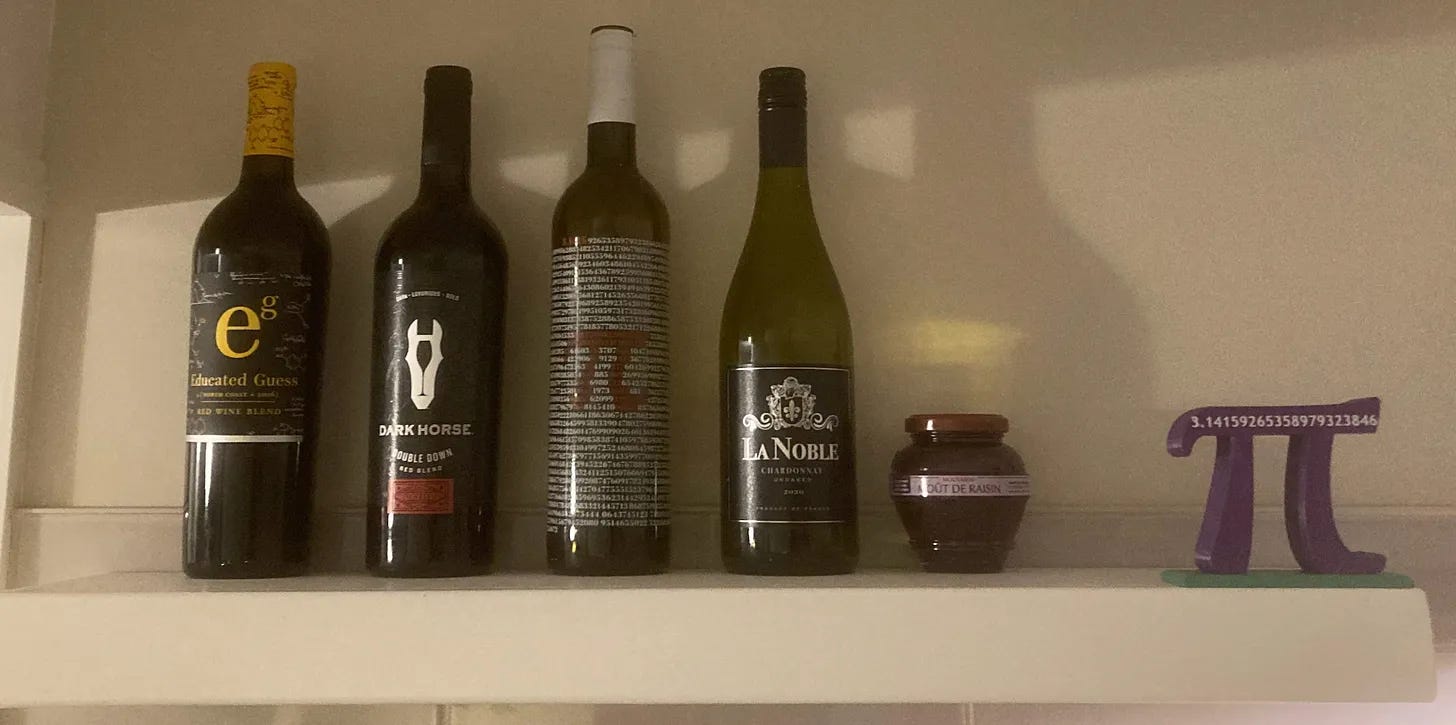
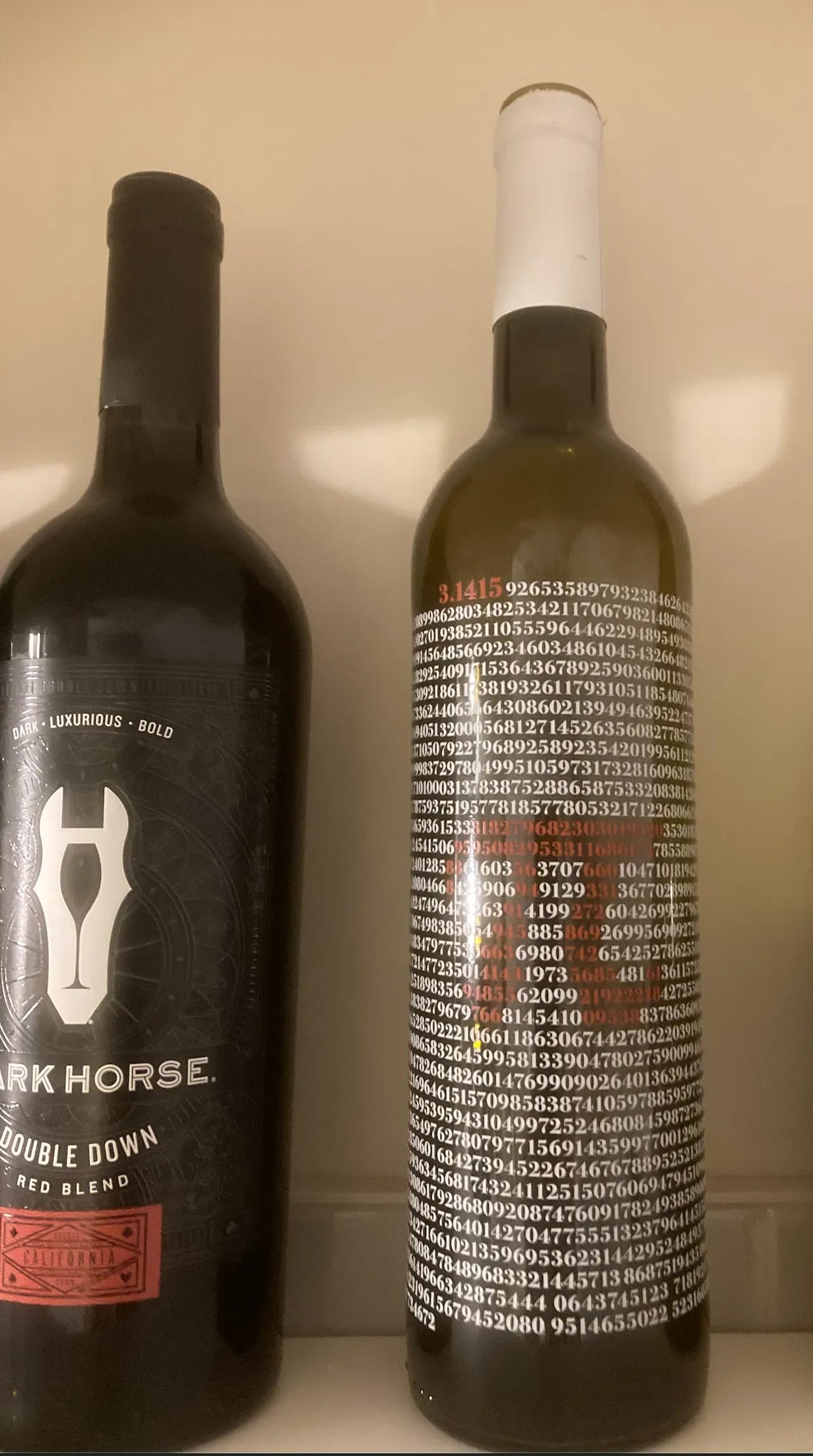

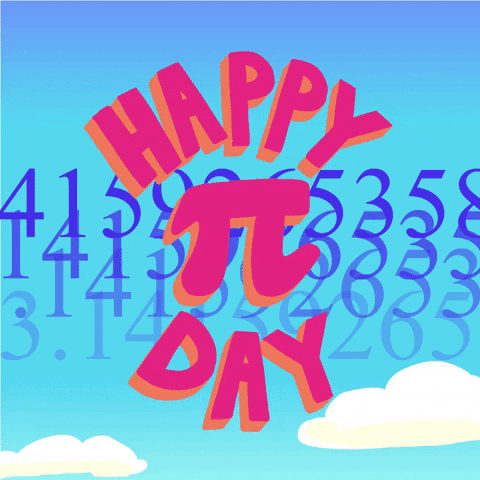
Wishing you a happy one ! One of the schools where I teach is having a pie 🥧 contest and pie sale for the holiday. This is a very poor urban public school and it’s so good to see the kids learning about math in a fun way.
I am a closet math nerd…I was a late bloomer. I had no idea who I really was until I started homeschooling my kids. I suppose maybe I’m not so in the closet anymore as most people who visit inevitably notice my Epsilon of Math calendar and might even be subject to trying a problem or two on a Friday night. Holly’s series on “How Not to Suck at Math” is what led me to read this Substack in the first place. (And for a multitude of reasons, I very grateful for that!)
I was elated when my 11 year old reminded me it was Pi Day, and asked me how many digits of pi I could recite. (For the record, he beat me by going to the eleventh digit. I only know to the eight digit which is probably going to get me kicked out of the math nerds club.)
I hope everyone who reads this Substack will read Holly’s series and share with their kids. One thing I learned from homeschooling is that everyone can become “smart” at math. Had I not homeschooled my kids, my 11 year old would probably be in a remedial math class but here he is learning math in a way I never did, and exploring concepts nobody would dream of teaching to a sixth grader.
My boys and I have gotten to explore so many areas of math that truly are cool- number theory, counting and combinatorics, etc. I was always in an advanced or honors math in middle and high schools and I learn things now that I think- I can’t believe nobody EVER told me this! Concepts that really tie things together like Pascal’s triangle and binomial expansions (and imagine finding that out when studying combinations! )
The bigger benefit of really stretching your brain with mathematics is the confidence it instills. Doing something hard like taking something new and turning it into something you know how to solve instead of plugging in a formula does a number to your confidence that transcends all aspects of life. Or figuring out the “formula” before they tell it to you. Kids can actually do that if you let them and teach them how. Teaching my kids math is hands down the most rewarding experience of my family life.
There are so many resources out there, but I have to recommend the Art of Problem Solving and their program for younger kids, Beast Academy- it is a really good place to start. And using Holly’s ideas of relating math to real life makes it fun! I especially like to save those gems for when one of my boys asks me about math in real life. (Boy did my boys and I enjoy the birthday probability bet!!!!)
Happy (belated) Pi Day! And thank you, Holly for your Substack!